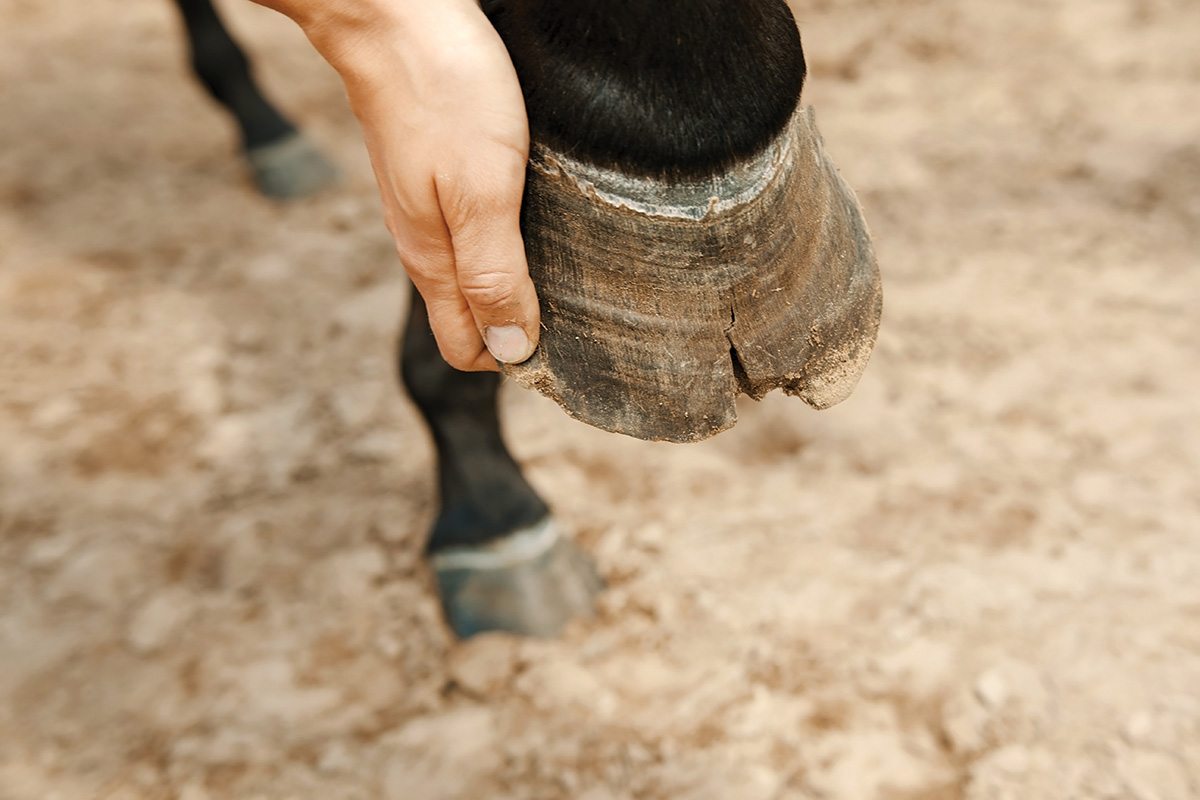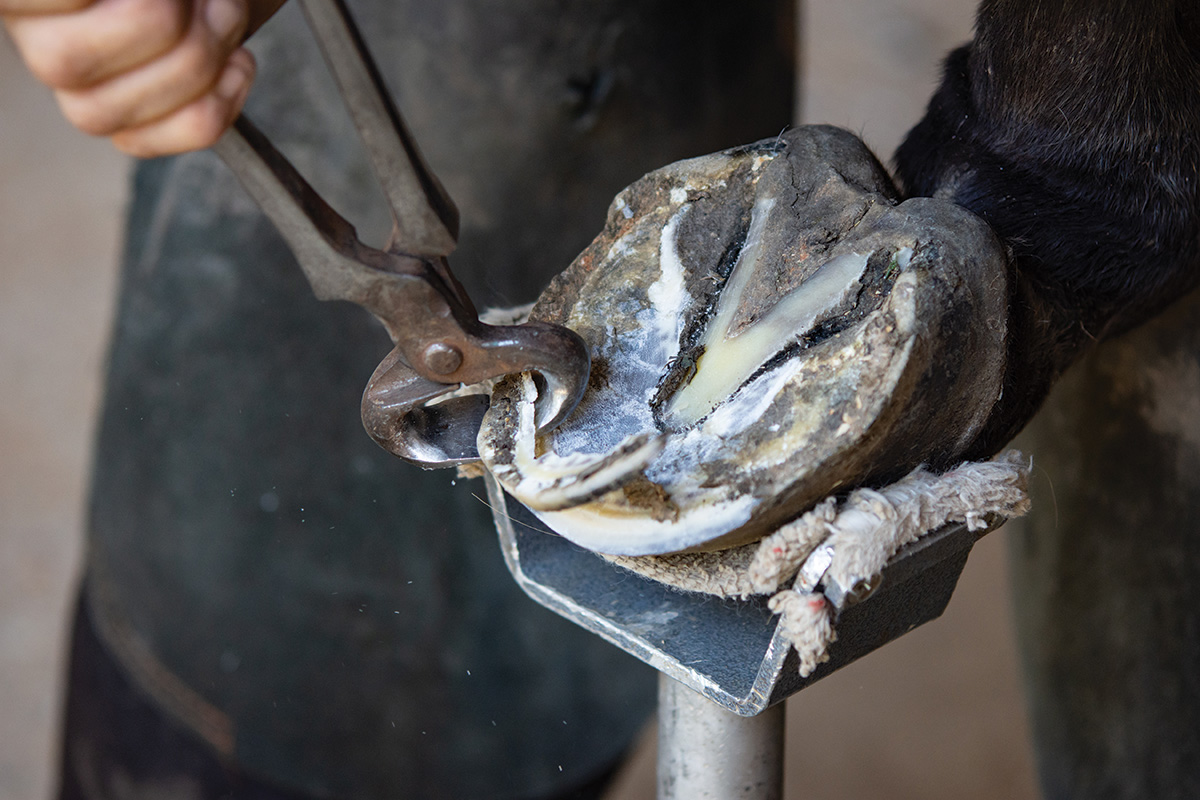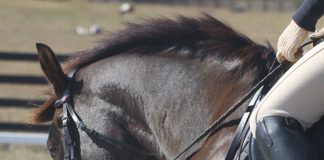
There’s no denying some horses have lucked out in the genetic lottery with indestructible feet. But if your horse isn’t one of these and struggles to grow a good hoof in spite of regular trims, a good exercise program and a sparklingly clean, dry stall, there may be more you can do, starting with looking into the nutrients that grow healthy feet from the inside out. However, since a horse’s hooves only grow about 1/3 of an inch per month, it can take up to a year to see if nutrition changes are helping hoof health.

There are dozens of micronutrients present in a horse’s diet. It’s best not to fiddle with them except under the guidance of an equine nutritionist, as imbalance and excess can cause more problems than they solve. For most horse owners, feeding good-quality hay (or pasture) with a concentrate or ration balancer formulated specifically for horses and fed per label directions is the safest way to balance vitamin, mineral and protein input.
If you are curious to learn more about how nutrition can help contribute to hoof health and how, focusing on specific nutrients, then read on.
Macronutrients
Fat: Fat creates a barrier to keep fungi and bacteria from entering the hoof horn. Given a gradual adjustment period, horses do very well with supplementary fat or oil in the diet, and it’s also a good way to put weight on hard keepers without increasing dietary sugar or starch.
Protein: Protein is made up of 20 building blocks called amino acids. “Essential” amino acids are those your horse cannot produce and must get from his diet. If he is missing one or more essential amino acids, he can’t make full use of the protein in his diet, which is used to make muscle, hair, and hoof cells.
The first limiting amino acid is lysine, followed by methionine and then threonine. This means that if deficient in lysine, a horse can’t use any more methionine. And if he has enough lysine but insufficient methionine, he can’t use more threonine, et cetera.
Signs of essential amino acid deficiencies can include joint, ligament and tendon breakdown (lysine); cracking, crumbling hooves and poor hair coat (methionine); and poor body condition, poor topline muscling and lack of energy (threonine).
But this doesn’t mean you should dump tons of extra protein into your horse’s diet. That can be hard on the kidneys for horses with decreased kidney function or insufficient water intake. Plus, even a healthy horse will just excrete whatever is not needed in what we like to call “expensive urine.” When shopping for supplemental protein, always check that it includes the first three limiting amino acids.
Vitamins
Biotin (vitamin B7): One of the more well-studied nutrients for hoof health, biotin is thought to help enhance hoof growth rate and hoof wall quality. Biotin contains sulfur, which strengthens the bond between collagen strands in the hoof wall.
Ten to 30 mg per day for horses with poor hooves despite a balanced diet is not harmful, and in case of a deficiency could help improve feet. B vitamins are water-soluble, and thus safe to feed since excess is excreted in urine.
If your horse grazes, keep in mind that this nutrient is already naturally occurring in pasture grass.
Vitamin C: This antioxidant is important for collagen synthesis. However, unlike humans, a normal healthy horse produces an enzyme within the liver that can convert glucose to vitamin C, and thus does not need additional dietary supplementation.
Minerals
Calcium and phosphorous: Calcium is necessary for attachment of cells to the hoof wall. However, nutritionists keep a careful eye on the calcium-to-phosphorous ratio since excess phosphorus blocks the absorption of calcium.
Copper and zinc: Both of these minerals support hoof growth and strength and are frequently seen in hoof supplements. Zinc in particular plays a role in keratinizing the hoof; however, too much zinc compromises copper and iron metabolism. Yet another reason to be very careful with adding dashes of this and that to your horse’s diet!
Selenium and vitamin E: These important antioxidants can be found in some hoof supplements, but extreme care should be taken. Too much selenium, in particular, can be quite toxic. If you are worried about a deficiency, have your hay tested for adequate selenium levels first, as these will depend on the levels in the soil in which the hay was grown.
This article about hoof health nutrition appeared in the April 2022 issue of Horse Illustrated magazine. Click here to subscribe!





